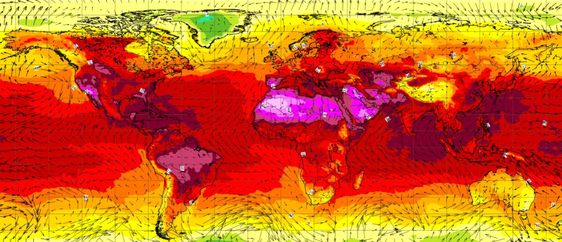Contact: Kristina Dahlberg Senior Consultant Employer Branding, DNVGL
“Technological advances offer us unprecedented opportunities for efficient seafood production. Enhanced cooling systems for extended shelf life, autonomous vessels, and big data can reduce costs, ensure higher product quality and better-informed consumers. We seek to seize the opportunities that these new technologies afford,” says project manager Ole Johan Lønnum, a marine technology graduate at NTNU.
Along with eight other graduates, he has developed SEAtrue, a supply chain for offshore distribution of aquaculture products. The consumer application TraceEat sends information about consumer preferences to the digital platform Veracity, which enables the best possible use of resources. The seafood is transported in autonomous smart “robot containers” which employ sophisticated cooling techniques to extend shelf life.
“SEAtrue is a cutting-edge supply chain system that allows for optimal distribution and lower emissions. Moreover, it adjusts production to meet demand and thereby enhance a sustainable aquaculture industry,” Lønnum adds.
The self-propelled containers are released from the processing vessel and either position itself for pick up by a designated container ship or sails directly to a nearby port. That way, transportation by sea becomes more effective and efficient. Veracity, DNV GL’s proprietary digital platform, uses data from an autonomous fleet of container ships to determine the optimal routing to reach the consumer.
“I am impressed by the student’s industry insight and the solution they have come up with in such short time. We hope they have got a taste of what it’s like to be working within this field,” says project manager Liv Aune Hagen at DNV GL.
Information about how aquaculture products are produced, its environmental impact, price, transport distance and feed composition is becoming increasingly important to consumers. In turn, such growing expectations drives a demand for efficiency, competitiveness, and quality throughout the value chain of an aquaculture farming industry in rapid expansion.
The nine chosen graduates have been assigned the task of finding a solution concerned with overcoming the spiraling costs and sustainability issues currently facing the industry. The solution, which was presented at DNV GL’s headquarter today at Høvik, can revolutionize production and distribution of aquaculture products.
Growth in the sustainable ocean economy
The DNV GL team has been asked to solve a challenge that is on the national agenda. Earlier this year the Norwegian government launched its Norwegian Ocean Strategy, aimed at creating jobs and sustainable growth in the blue economy – most notably in the aquaculture industry.
“The summer project paves the way for new and innovative ideas that contribute to fulfilling the government’s blue growth strategy, the increasing global shortage on proteins and DNV GL’s vision of making a “global impact for a safe and sustainable future”,” says Hagen.
If the solution is being implemented, this would represent a significant opportunity and progress for Norwegian trade and business. The students hope that the project is globally scalable, because of access to nutritious protein supplements, both from sea and land, is not a certainty in all places.
With the DNV GL solution, additional onshore infrastructure is not a necessity because distribution happens with the use of processing vessels and autonomous self-propelled containers to the market. It entails that the solution is easily scalable from one place to another without special demands for vast infrastructure investments. Thus, the solution is particularly suited for areas with poorly developed infrastructure.
The team emphasizes that the solution requires additional small-scale testing. The solution could be implemented by 2030, but this would require opportunistic thinking and strong commitment from all parties involved.

The summer project team (From left): Lars Sørum, Liv Aune Hagen, Balder Riiser Haugerud, Ole-Johan Lønnum, Mats Mowinckel Giovannoni, Helene Rimstad, Maren Eidal, Hans Jørgen Asplin, Marita Helgesen, Adrian Falck, Marius Aasen, Kristina Dahlberg and Ketil Aamnes.
Providing valuable insightTo give the students a better understanding of the challenges the industry is facing, the students have met with several clients of DNV GL. The different clients provided them with useful information and broadened their horizon. Thus, developing a solution for the summer project has become valuable for additional actors working within the industry.
“Being part of the aquaculture industry we find it extremely important and take this topic seriously. Inviting the next generation to bring new perspectives and ideas to the table is tremendously rewarding. I have also seen them challenge our way of working, which I find refreshing. Hence, I hope that the project inspires our employees and the industry as a whole to identify new possibilities and take a more sustainable approach to doing business. Together we have the resources needed and we must join forces to take advantage of them,” says Vice president Maritime Advisory in DNV GL, Ketil Aamnes.
He has been following the project closely over the summer and is clearly impressed by the team’s courage and determination.
“The students are vigorous, self-confident, and dare to play up bold ideas. This is truly inspiring,” he adds.




Comments are closed.